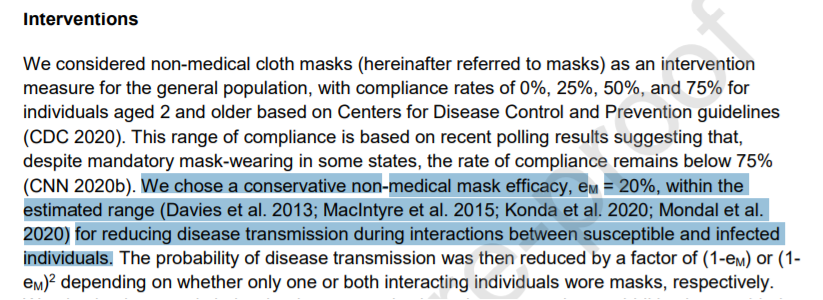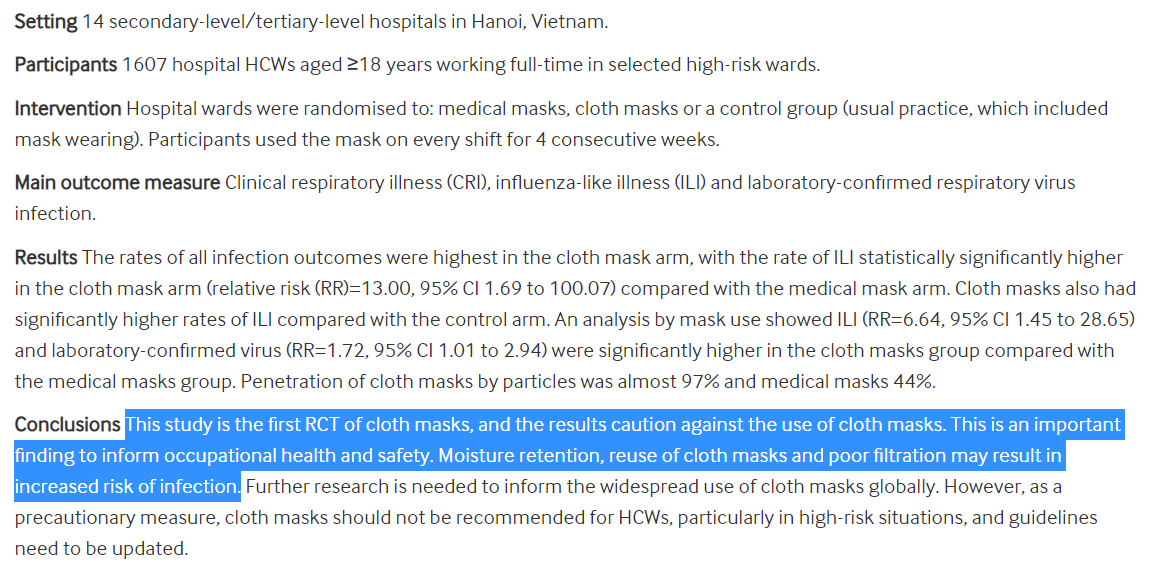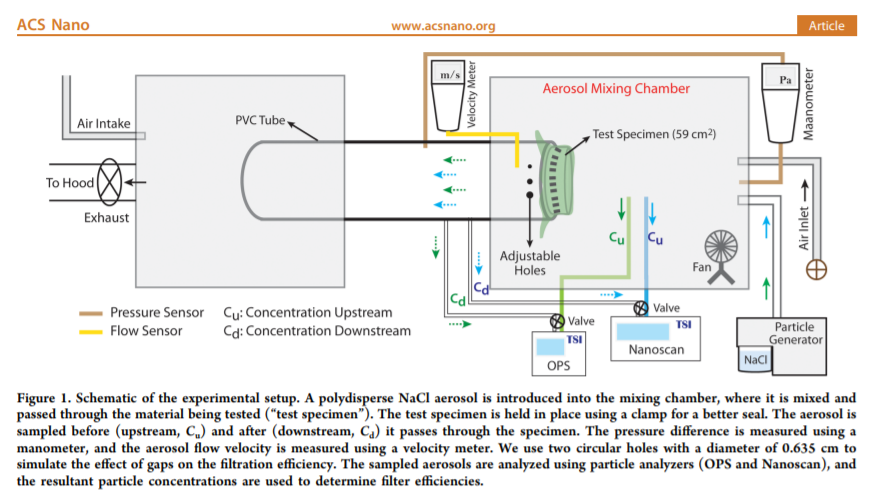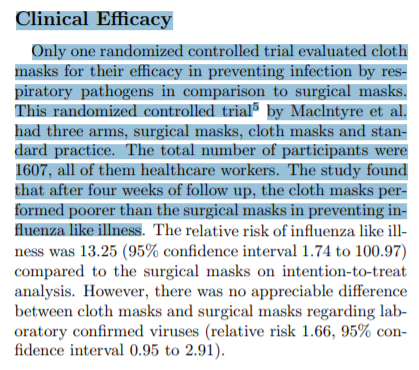1/ I earnestly looked into this, because I wanted to know how they arrived at these results.
"[B]ased on predictive models, COVID-19 impacts could be lessened by up to 47% if a majority of people wear masks."
Oh, boy, predictive models? I thought we& #39;d learned our lesson here. https://twitter.com/FOXNashville/status/1316746671599030273">https://twitter.com/FOXNashvi...
"[B]ased on predictive models, COVID-19 impacts could be lessened by up to 47% if a majority of people wear masks."
Oh, boy, predictive models? I thought we& #39;d learned our lesson here. https://twitter.com/FOXNashville/status/1316746671599030273">https://twitter.com/FOXNashvi...
2/ "Predictive model" here is a fancy way of saying "our results are based on parameterized inputs, not empirically observed data."
Still, let& #39;s give them the benefit of the doubt, shall we? Here& #39;s the paper. Let& #39;s dive in! https://www.ijidonline.com/article/S1201-9712(20)32204-9/pdf">https://www.ijidonline.com/article/S...
Still, let& #39;s give them the benefit of the doubt, shall we? Here& #39;s the paper. Let& #39;s dive in! https://www.ijidonline.com/article/S1201-9712(20)32204-9/pdf">https://www.ijidonline.com/article/S...
3/ As expected, the model is based on parameters derived from other literature.
On masks:
"We chose a conservative non-medical mask efficacy, eM = 20%, within the estimated range for reducing disease transmission during interactions between susceptible and infected individuals."
On masks:
"We chose a conservative non-medical mask efficacy, eM = 20%, within the estimated range for reducing disease transmission during interactions between susceptible and infected individuals."
4/ They refer to 4 papers as justification for their parameter. Let& #39;s look at the first one (Davies et al. 2013).
"[T]he homemade mask did not significantly reduce the number of particles emitted (P = .106)."
Oh? https://www.ncbi.nlm.nih.gov/pmc/articles/PMC7108646/#!po=1.06383">https://www.ncbi.nlm.nih.gov/pmc/artic...
"[T]he homemade mask did not significantly reduce the number of particles emitted (P = .106)."
Oh? https://www.ncbi.nlm.nih.gov/pmc/articles/PMC7108646/#!po=1.06383">https://www.ncbi.nlm.nih.gov/pmc/artic...
5/ This paper concludes:
"[T]hese masks would provide the wearers little protection from microorganisms from others persons who are infected with respiratory diseases. ..[W]e would not recommend the use of homemade face masks as a method of reducing transmission of infection"
"[T]hese masks would provide the wearers little protection from microorganisms from others persons who are infected with respiratory diseases. ..[W]e would not recommend the use of homemade face masks as a method of reducing transmission of infection"
6/ Well, maybe let& #39;s try the next one (MacIntyre et al, 2015).
Some of you may recognize this paper! It& #39;s been frequently cited... by those panning the efficacy of cloth masks.
It famously found *higher* infection rates from cloth masks than the control. https://bmjopen.bmj.com/content/5/4/e006577?fbclid=IwAR10n4XuIqgKFZQDEItYH73EhB0qLO78nid8PmRXeKHJ-1U2p9il5feY830">https://bmjopen.bmj.com/content/5...
Some of you may recognize this paper! It& #39;s been frequently cited... by those panning the efficacy of cloth masks.
It famously found *higher* infection rates from cloth masks than the control. https://bmjopen.bmj.com/content/5/4/e006577?fbclid=IwAR10n4XuIqgKFZQDEItYH73EhB0qLO78nid8PmRXeKHJ-1U2p9il5feY830">https://bmjopen.bmj.com/content/5...
7/ As a refresher: "This study is the first RCT of cloth masks, and the results caution against the use of cloth masks. ... Moisture retention, reuse of cloth masks and poor filtration may result in increased risk of infection."
OK, so this "new" mask efficacy model is 0-for-2.
OK, so this "new" mask efficacy model is 0-for-2.
8/ The other two papers are from 2020, so I don& #39;t have high hopes in their rigor, but let& #39;s continue to indulge.
Here is Konda, et al (2020). It essentially places different materials on the end of a tube and circulates air around to see what percentage of particles get through
Here is Konda, et al (2020). It essentially places different materials on the end of a tube and circulates air around to see what percentage of particles get through
9/ You may be thinking: "Hmm, doesn& #39;t seem to realistically represent mask-wearing in public."
The authors acknowledge this!
"[I]n the realistic situation of masks worn on the face without elastomeric gasket fittings (such as the commonly available cloth and surgical masks)...
The authors acknowledge this!
"[I]n the realistic situation of masks worn on the face without elastomeric gasket fittings (such as the commonly available cloth and surgical masks)...
10/ So, in conclusion, Konda finds that masks fitted as tightly/properly as N95s can reduce aerosol transmission substantially, but that in the "realistic situation" that your commonly available mask doesn& #39;t fit that way, it& #39;s probably 60% less effective.
https://pubs.acs.org/doi/pdf/10.1021/acsnano.0c03252">https://pubs.acs.org/doi/pdf/1...
https://pubs.acs.org/doi/pdf/10.1021/acsnano.0c03252">https://pubs.acs.org/doi/pdf/1...
11/ One more paper! Here is Mondal et al. (2020). This is one commonly cited by proponents of mask-wearing. It is a meta-analysis, of sorts (only 10 papers) - two of which we& #39;ve already covered (MacIntyre, Konda).
https://www.medrxiv.org/content/10.1101/2020.05.07.20093864v1.full.pdf">https://www.medrxiv.org/content/1...
https://www.medrxiv.org/content/10.1101/2020.05.07.20093864v1.full.pdf">https://www.medrxiv.org/content/1...
12/ The limitations identified by the authors are pretty broad. Namely:
"Only one randomized controlled trial evaluated cloth
masks for their efficacy in preventing infection by respiratory pathogens"
Yep, that was MacIntyre - the paper that found *higher* infection with cloth.
"Only one randomized controlled trial evaluated cloth
masks for their efficacy in preventing infection by respiratory pathogens"
Yep, that was MacIntyre - the paper that found *higher* infection with cloth.
13/ 7(!) of the 10 papers covered by this study focused on filtration efficacy of material. Only two used "healthy volunteers," i.e. humans. One was Davies, 2013 (see tweets 4 and 5 - they don& #39;t recommend cloth masks!). The other was van der Sande, et al. (2008). They found:
14/ OK, so some minor benefit of masks.
I decided to look up the van der Sande paper, though, for the hell of it.
Take a look at what else is in the conclusions: "Given the need for the population to acquire sufficient natural immunity over time..."
Oh no! Not herd immunity!
I decided to look up the van der Sande paper, though, for the hell of it.
Take a look at what else is in the conclusions: "Given the need for the population to acquire sufficient natural immunity over time..."
Oh no! Not herd immunity!
15/ So, in conclusion: The new paper by Zhang et al. which claims mask-wearing would reduce infections/deaths by 47% assumes that masks are 20% effective. They cite 4 papers to support this assumption. 2say they don& #39;t work at all. 1 is mechanical. 1 advocates herd immunity.
16/ The paper also advocates for shelter-in-place efforts (funny since they indirectly source their mask efficacy parameter from a paper that advocates herd immunity), and don& #39;t explain why 1 mask-wearer = 20% effective, but 2 = 36% effective.
This is apparently science.
This is apparently science.

 Read on Twitter
Read on Twitter
![5/ This paper concludes:"[T]hese masks would provide the wearers little protection from microorganisms from others persons who are infected with respiratory diseases. ..[W]e would not recommend the use of homemade face masks as a method of reducing transmission of infection" 5/ This paper concludes:"[T]hese masks would provide the wearers little protection from microorganisms from others persons who are infected with respiratory diseases. ..[W]e would not recommend the use of homemade face masks as a method of reducing transmission of infection"](https://pbs.twimg.com/media/EkZ1EGPUYAEv1kM.png)


![9/ You may be thinking: "Hmm, doesn& #39;t seem to realistically represent mask-wearing in public."The authors acknowledge this!"[I]n the realistic situation of masks worn on the face without elastomeric gasket fittings (such as the commonly available cloth and surgical masks)... 9/ You may be thinking: "Hmm, doesn& #39;t seem to realistically represent mask-wearing in public."The authors acknowledge this!"[I]n the realistic situation of masks worn on the face without elastomeric gasket fittings (such as the commonly available cloth and surgical masks)...](https://pbs.twimg.com/media/EkZ6JMgU8AUDe2t.png)





